Yesterday I found out on Facebook that Walter Shipman had died. I guess it’s not too much of a surprise, as he was 87 years old, but he is one of those few people who seem determined to keep on going forever. Somehow that plan never seems to work, but he gave it a good shot!
The tributes to him on Facebook spoke about Shipman’s great sportsmanship. I have to say that I didn’t know him well. Even though we played four tournament games, I never really conversed with him before and after the games, and I regret that now. Sometimes I am just too intense and forget about the human side of chess.
Nevertheless, our four games (in which I went +2 -1 =1) are especially meaningful to me because they are for me a link to the chess past. Thanks to Shipman, my “Erdos number” for most of the world champions of the twentieth century is three: I beat Shipman, he beat Sammy Reshevsky (1955, in the Rosenwald Tournament), and Reshevsky beat {your pick of Lasker, Capablanca, Alekhine, Botvinnik, Smyslov, Fischer}.
Typically in a tribute to someone you would write about one of their great victories. But because I am a morally deficient person, I’ll show you one of my two wins over Shipman. To me it epitomizes Walter Shipman chess: tough and resilient. When you played him, you just knew there weren’t going to be any easy points.
I have to admit it’s a very imperfect game, which is why I don’t think I’ve blogged about it before. But that’s what makes it exciting: there are lots of swings back and forth, and at the end both players are balancing on a knife edge between victory and defeat. To me, it doesn’t matter who won or lost, or how many mistakes were made. Both players fought honorably, and Chess won.
Western States Open, 2009
Walter Shipman – Dana Mackenzie
Veresov’s Opening
1. d4 Nf6 2. Nc3 d5 3. Bg5 Nbd7 4. Qd3 c5 5. O-O-O c4 6. Qd2 Qa5
Shipman played the Veresov twice against me, and both times I thought I got a terrific position. In our second game with it, I played 6. … b5 here, which may be even better than 6. … Qa5. Nevertheless, that time I only drew.
7. Kb1?! …
Maybe a bit too cautious. This is the first of many times in the game where Shipman played the right move a move too late; 7. f3 is probably a better try. Now Black gets a great position at no risk.
7. … e6 8. f3 Bb4 9. e4 Bxc3 10. Qxc3 Qxc3 11. bc de 12. Bxc4 b5 13. Be2 Rb8 14. Nh3 Nd5 15. Bd3 c3 16. Be1 …
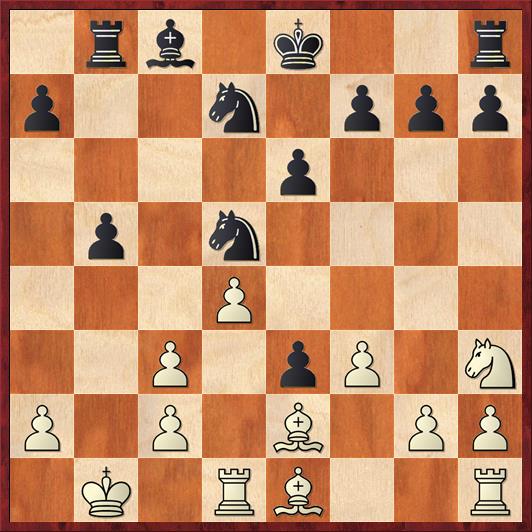 Position after 16. Be1. Black to move.
Position after 16. Be1. Black to move.
FEN: 1rb1k2r/p2n1ppp/4p3/1p1n4/3P4/2P1pP1N/P1P1B1PP/1K1RB2R b k – 0 16
So far Black has just been pushing White all over the board. But now I started to drift. My next move is just plain unnecessary. I should continue 16. … Ndb6. I’m happy if White takes the b-pawn, because it helps me open lines against his king; after 17. Bxb5+ Bd7 18. Bd3 Nxc3+! 19. Bxc3 Na4+ 20. Ka1 Nxc3 21. Rde1 Rb4 Black definitely stands better.
16. … a6?! 17. Ka1 N7b6 18. Rb1 Bb7?
I had to break the pin with 18. … Rb7, even though it’s slightly awkward. Now Shipman seizes the opportunity to take the initiative.
19. c4! bc 20. Ba5! Bc6 21. Bxc4 O-O!
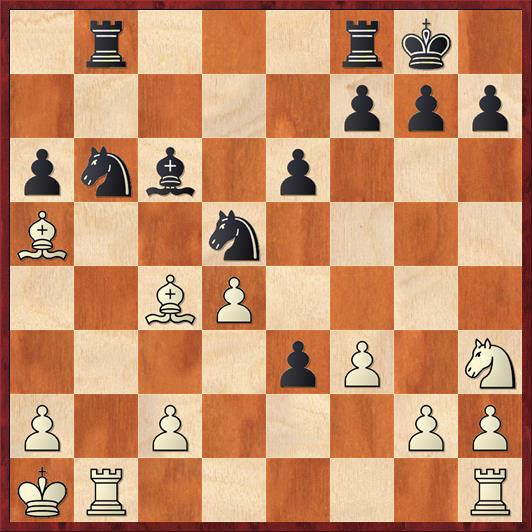 Position after 21. … O-O. White to move.
Position after 21. … O-O. White to move.
FEN: 1r3rk1/5ppp/pnb1p3/B2n4/2BP4/4pP1N/P1P3PP/KR5R w – – 0 22
Both sides are fighting for the initiative! This is the kind of chess I love. I am hoping that White will be tempted to take the a-pawn, because after 22. Bxa6? Ra8 23. Bxb6 Rxa6 24. Bc5 Nc3 Black is fine. In fact, after 25. Rb2 R8a8 26. a3 Rxa3+! Black would win.
However, Shipman shows his International Master credentials with the next move.
22. Bxd5! …
Trading away the two bishops and eschewing the poisoned pawn on a6. White gets a clear advantage with this move, because Black cannot defend the e3-pawn. I am forced to scramble for counterplay.
22. … Nxd5 23. c4 Nf6 24. Rbe1? …
In this part of the game I think that Shipman let down his guard. He probably thought there was nothing to worry about. But here he should play 24. Rhe1 and keep a rook on the b-file. By letting me double rooks on the b-file, he gave me the opportunity for counterplay that I wanted.
24. … Rb7 25. Rxe3 R8b8 26. Bc3? …
Also a mistake. I think he was trying to avoid playing Re2 but my next move forces him to play it anyway. This is the second time in the game when he plays the right move one move too late.
26. … Ba4 27. Re2 …
Forced, because black threatens Bc2 with a mate threat.
27. … Rc8
Now we see why 26. Bc3 was a mistake, because the bishop is in the way and White has no way to defend his pawn on c4 except to advance it.
28. c5 Nd5
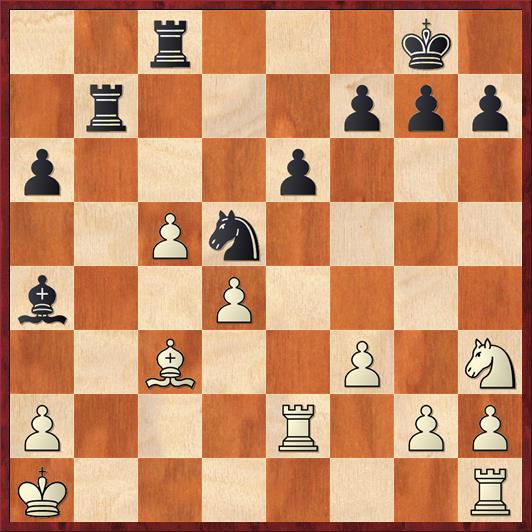 Position after 28. … Nd5. White to move.
Position after 28. … Nd5. White to move.
FEN: 2r3k1/1r3ppp/p3p3/2Pn4/b2P4/2B2P1N/P3R1PP/K6R w – – 0 29
Black has made tremendous progress over the last few moves and now has really good drawing chances. As I wrote in my notebook, “White’s extra pawn is not going anywhere, and all of Black’s pieces are better than White’s pieces.”
Even so, you would never expect Black to win this game. There are still lots of twists and turns ahead!
29. Rb2 R8b8 30. Rxb7 Rxb7 31. Bd2 Kf8 32. Rc1 Ke7 33. Nf2 Nb4
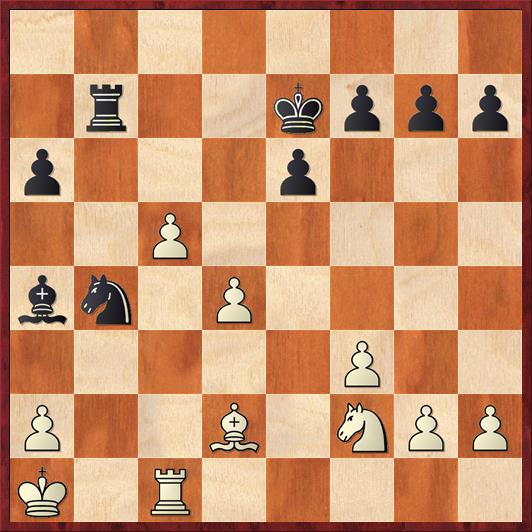 Position after 33. … Nb4. White to move.
Position after 33. … Nb4. White to move.
FEN: 8/1r2kppp/p3p3/2P5/bn1P4/5P2/P2B1NPP/K1R5 w – – 0 34
I knew that I was taking a bit of a risk with my last move, but still I was gobsmacked when Rybka showed me after the game that White is close to winning. I don’t blame Shipman for missing White’s best move; to me it is a grandmaster move, or a super-GM move, or maybe just a computer move. Can you see it?
34. Bxb4? …
The correct move was 34. c6!! The thing that make this hard to find isn’t the move itself but the followup. After 34. … Nxc6, White just seems to have given up a pawn for nothing. But then White plays 35. Ne4!, seemingly a mild-mannered move, but it transpires that all of Black’s pieces are stepping on each others’ toes. The main point, I would say, is that White wins the bishop or the knight after 35. … Bb5 36. a4! The knight fork on c5 is a killer. A much less obvious point — which still has to be calculated — is that neither 35. … Rc7 nor 35. … Rb6 work because of 36. d5!! ed 37. Nc3!, when now it’s the fork at c3, followed if necessary by a fork at d5, that’s the killer.
This is truly an amazing example of the power of the knight. If you saw all of this, including 36. d5 and Nc3, go to the head of the class. For Shipman, alas, this was the third time when he played the right move one move too late.
34. … Rb4 35. c6!? …
The trouble is that Black’s king is in time to stop the pawn. Now it is White’s turn to have an over-extended pawn that he cannot hold onto, and he has to scramble for counterplay.
35. … Kd8 36. c7+ Kc8 37. Ne4 Rxd4 38. Ng5! …
A nice idea! Even though the knight has to wander far afield, it does win a pawn.
38. … Rd7
The move 38. … Be8 was tempting, hoping to trap the knight with 39. Nxh7 f6, but I just don’t think it works. In any case, time pressure was definitely a factor by now, and I just wanted to play simply and live to fight in the endgame.
39. Nxh7 Rxc7 40. Rxc7+ Kxc7 41. Ng5 Be8 42. Ne4 Kc6 43. Kb2 Kd5 44. Kc3 …
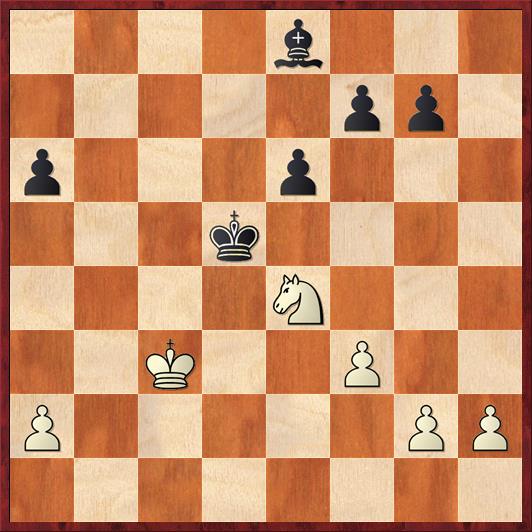 Position after 44. Kc3. Black to move.
Position after 44. Kc3. Black to move.
FEN: 4b3/5pp1/p3p3/3k4/4N3/2K2P2/P5PP/8 b – – 0 44
After a tough, hard-fought, scrappy opening and middlegame, it seems appropriate that it has come down to a tough endgame. In principle, I think there’s no doubt that White should be able to draw. But Black has just enough pluses to make it difficult: a bishop against a knight, better king position. I was really proud that against an 80-year-old International Master, whose greatest strength should be the endgame, I outplayed him in the endgame.
My first step is a feisty one. I’m not sure it’s really a good move, but it had the advantage of luring White away from what I think was his best plan.
44. … a5!?
I was trying to take away any ideas White might have of Kb4, but I doubt that was really a threat. The trouble with 44. … a5 is that every time my a-pawn moves, it becomes a bigger target. And yet at the same time, that turns out to be an advantage! Shipman’s eyes got focused on the queenside and he lost focus on the other side of the board. I think that his most reliable plan was to keep his knight on e4 until Black kicks it with … f5, then move it to g5 and set up a wall with pawns at h4, g3, and f3. Therefore I think that White’s best answer was 45. h4. (Also, in some cases White might try creating a passed pawn on the h-file — Black can’t completely ignore this.) Instead, Shipman starts playing on the queenside.
45. Nd2 Bb5 46. Nb3 a4 47. Nd2 e5 48. a3? …
This is the fourth, and worst, time when Shipman plays the right move a move too late. There is no reason not to play 48. Kb4, when the pawn sac I played in the game is no good. If 48. … Be2? Black would be a tempo behind the game, and as we’ll see, that tempo is absolutely crucial. So Black would have to retreat the bishop and would have no real path to victory.
I believe that Shipman’s mistake was due to jitters, something that happens to older players… or maybe to all players. I had the jitters too, as we’ll see.
48. … f5 49. Kb4 Bc6
I didn’t have the nerve yet to play the pawn sacrifice.
50. Kc3 Bb5 51. Kb4 …
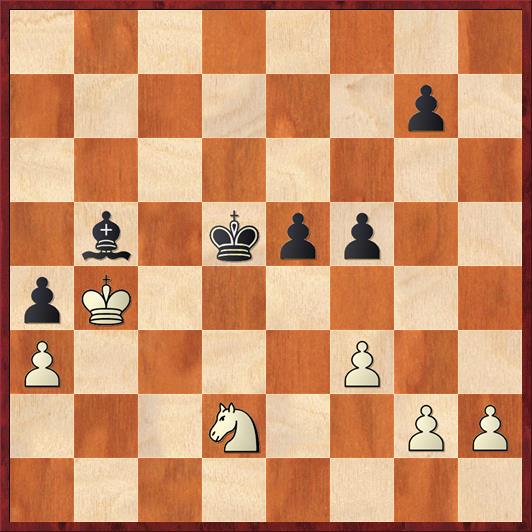 Position after 51. Kb4. Black to move.
Position after 51. Kb4. Black to move.
FEN: 8/6p1/8/1b1kpp2/pK6/P4P2/3N2PP/8 b – – 0 51
51. … Be2!
The only way to play for a win. It was scary, because I couldn’t actually work it out all the way, and of course giving him a passed a-pawn means that I could lose if I mess up.
52. Kxa4 Kd4?
A mistake right away! The computer says that 52. … e4 was better. You’ll see why in a couple moves.
53. Kb4 Bd1!
A key move. If 54. Nb3 Bxb3 55. Kxb3 Kd3! White loses, thanks to 56. a4 e4 57. a5 a3 58. a6 e2 59. a7 e1Q 60. a8Q Qb1+ and Black skewers the king and queen next move. We’ll see this same theme in the actual finish of the game.
54. a4 e4 55. fe fe 56. a5? …
White’s last chance for a draw was to sacrifice his knight with 56. Nxe4! But this is so hard to evaluate. Using Rybka I can say pretty confidently that it would be a draw with best play, but over-the-board this was nightmarishly hard to calculate, and who’s to say that we would have “best play”? For all White knows, giving up his last piece could be a fatal mistake rather than a saving grace. And finally, it’s quite possible that Shipman thought that this move was a draw, too.
56. … e3 57. a6 ed!
Not 57. … e2??, when White stops the pawn with 58. Nf3! and wins!
58. a7 …
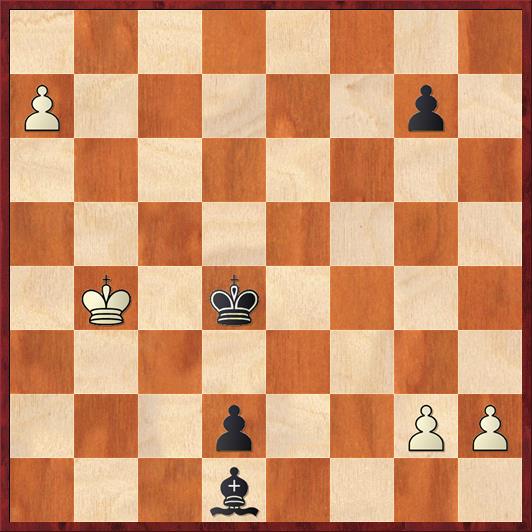 Position after 58. a7. Black to move.
Position after 58. a7. Black to move.
FEN: 8/P5p1/8/8/1K1k4/8/3p2PP/3b4 b – – 0 58
As I said in the note to White’s 56th move, it’s possible that Shipman got to this position in his analysis and thought that it was a draw, because Black has no way to stop White from queening. Do you see what he missed?
(A little extra space for you to think about it.)
58. … Bf3!
I don’t need to stop the pawn, only detain it!
59. gf d1Q 60. resigns
If 60. a8Q, then we once again have the skewer motif with 60. … Qb1+ followed by 61. … Qa1+.
What a thrilling, heart-pounding battle! This game totally redefines the concept of “old man chess.”



{ 2 comments… read them below or add one }
Walter was indeed a good guy. I don’t think of him as a “gentleman” (a term some people have used), which sounds stuffy, but as a down-to-earth friendly man.
I had only one tournament game with him, a skin-of-my-teeth draw 30 years ago, but saw him at many other events. Sad to think that he’s gone.
Walter was a fixture on the chess scene on the east coast as I was coming up, always a gentleman and quite accessible to young players like me. He was the inspiration for one of the main opening systems I relied on for years at the master level – a Steinitzian counterattacking system in double king pawn system involving refraining from castling in favor of storming the castled White king, while strong-pointing e5.
I looked for games of his in the vast ChessLecture archive, and there is one: your lecture on the above game – Turning Points – published six years ago. In his memory, we’re making your lecture available free to all for the month. Here is a direct link to it:
http://www.chesslecture.com/video.php?id=1453
My condolences to Joe and Judy and all of his family. RIP, Walter.